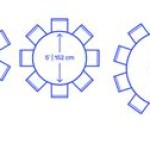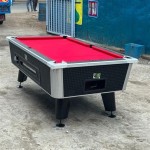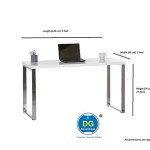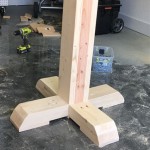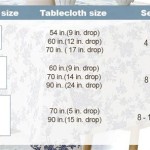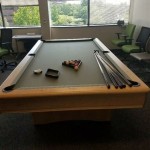Heywood Wakefield Lamp Table: A Study in Mid-Century Modern Design
The Heywood Wakefield lamp table stands as a quintessential example of mid-century modern furniture design. Its clean lines, light coloration, and functional simplicity resonate with the aesthetic principles that defined the era. Understanding the design influences, manufacturing processes, and enduring appeal of these tables provides insight into a significant period of American furniture history.
Heywood Wakefield, a company with roots tracing back to the early 19th century, transitioned from wicker furniture to contemporary designs that captured the post-World War II zeitgeist. Their emphasis on blond wood, streamlined shapes, and versatile functionality made their pieces highly desirable for the modern home. The lamp table, in particular, represents a microcosm of their design philosophy, embodying both practicality and understated elegance.
These tables served a crucial function in living rooms and bedrooms, offering a surface for lamps, books, and other everyday items. Their size and shape were carefully considered to complement other furniture pieces without overwhelming the space. The enduring popularity of Heywood Wakefield lamp tables speaks to their timeless design and ability to integrate seamlessly into various interior styles.
Key Design Elements of Heywood Wakefield Lamp Tables
Several distinct characteristics define the design aesthetic of Heywood Wakefield lamp tables. These elements contribute to their overall appeal and distinguish them from other furniture pieces of the period.
First, the use of solid birch wood is paramount. Birch, chosen for its light color and fine grain, allowed for the signature "Wheat" and "Champagne" finishes that became synonymous with the Heywood Wakefield brand. These finishes, applied with meticulous care, enhanced the natural beauty of the wood while providing a durable and easy-to-clean surface. The blond wood popularized by Heywood Wakefield represented a departure from the darker, heavier furniture styles of previous decades, reflecting a desire for lighter, airier living spaces.
Secondly, the emphasis on clean lines and minimalist forms is evident in the table's structure. The legs are typically tapered and splayed, a common characteristic of mid-century modern design. This leg design provides stability while adding a touch of visual interest without being overly decorative. The tabletop itself is often round, rectangular, or kidney-shaped, with smooth edges and a subtle curvature. The absence of elaborate ornamentation reinforces the functional and understated nature of the design.
Thirdly, the thoughtful consideration of proportion and scale contributes to the table's overall harmony. Heywood Wakefield designers understood the importance of creating furniture that was both functional and aesthetically pleasing. The dimensions of the lamp table were carefully calibrated to ensure that it would not overwhelm a room while still providing ample surface space. This attention to detail is a hallmark of good design and contributes to the enduring appeal of these tables.
Manufacturing Processes and Materials
The quality and durability of Heywood Wakefield lamp tables can be attributed to the manufacturing processes and materials used in their construction. The company employed skilled craftsmen who adhered to strict quality control standards.
The selection of high-quality birch wood was the first step in the manufacturing process. The wood was carefully inspected to ensure that it was free from defects and met the required specifications. It was then kiln-dried to reduce moisture content and prevent warping or cracking. This process was crucial for ensuring the longevity of the finished product.
Once the wood had been prepared, it was cut and shaped according to the design specifications. Traditional woodworking techniques were combined with modern machinery to create precise and consistent components. The legs, tabletop, and other parts were then assembled using mortise-and-tenon joints, dowels, and glue. These joinery methods provided strength and stability to the table.
The finishing process was a crucial step in achieving the signature Heywood Wakefield look. The wood was first sanded to create a smooth surface. Then, multiple coats of stain and lacquer were applied, with each coat being carefully buffed to achieve a lustrous sheen. The "Wheat" and "Champagne" finishes were particularly complex to achieve, requiring a precise combination of stains and techniques. The resulting finish was not only beautiful but also durable and resistant to scratches and stains.
The hardware used in Heywood Wakefield lamp tables, such as drawer pulls and hinges, was also carefully selected for its quality and design. These details, though seemingly small, contributed to the overall aesthetic and functionality of the table. The company’s commitment to using high-quality materials and employing skilled craftsmen ensured that their furniture would last for generations.
The Enduring Appeal and Collectibility of Heywood Wakefield Lamp Tables
Decades after their original production, Heywood Wakefield lamp tables remain highly sought after by collectors and enthusiasts of mid-century modern furniture. Several factors contribute to their enduring appeal and collectibility.
Firstly, the timeless design of these tables ensures that they remain relevant and stylish in contemporary interiors. The clean lines, light coloration, and functional simplicity of Heywood Wakefield furniture transcend fleeting trends and blend seamlessly with various decorating styles. Whether placed in a minimalist loft or a traditional living room, these tables add a touch of understated elegance.
Secondly, the scarcity of well-preserved examples contributes to their value. Many Heywood Wakefield lamp tables have survived the test of time, but finding pieces in excellent original condition can be challenging. Factors such as exposure to sunlight, moisture, and heavy use can damage the finish and structure of the tables. Collectors often seek out pieces that have been carefully maintained or professionally restored.
Thirdly, the historical significance of Heywood Wakefield as a pioneering American furniture manufacturer adds to the collectibility of their pieces. The company played a significant role in shaping the mid-century modern design movement, and their furniture represents a tangible connection to this important era. Owning a Heywood Wakefield lamp table is not just about owning a piece of furniture; it is about owning a piece of history.
Furthermore, the emotional connection that many people have with Heywood Wakefield furniture contributes to its enduring appeal. For many, these pieces evoke memories of simpler times and a sense of nostalgia for the mid-century era. This emotional connection makes these tables more than just functional objects; they are cherished reminders of a bygone era.
The market for vintage Heywood Wakefield furniture continues to thrive, with prices varying depending on the condition, model, and rarity of the piece. Collectors often seek out specific models or finishes, and they are willing to pay a premium for pieces in excellent original condition. The enduring appeal and collectibility of Heywood Wakefield lamp tables ensure that they will continue to be valued and appreciated for generations to come.
The enduring legacy of the Heywood Wakefield lamp table highlights the importance of good design, quality craftsmanship, and historical context. These tables are not simply functional objects; they are tangible artifacts that reflect the design sensibilities and cultural values of the mid-century modern era.
The meticulous manufacturing process, from the selection of high-quality birch wood to the application of the signature finishes, ensured the durability and longevity of these pieces. The skilled craftsmen who built these tables took pride in their work, and their attention to detail is evident in every aspect of the design.
By studying the design elements, manufacturing processes, and enduring appeal of Heywood Wakefield lamp tables, one can gain a deeper appreciation for the artistry and craftsmanship that went into creating these iconic pieces of furniture. Their continued popularity serves as a testament to the enduring power of well-designed and well-made objects.

Heywood Wakefield M391g Classic Mid Century Modern Lamp Table At 1stdibs Herman Furniture

Mid Century Modern Furniture Lamp Table With Drawer

Mid Century Modern Heywood Wakefield Maple Lamp Table Norway

Mid Century Modern Heywood Wakefield Maple Lamp Table

Heywood Wakefield Lamp Table At 1stdibs

Mid Century Modern Heywood Wakefield Maple Lamp Table

Set Of 2 Heywood Wakefield Lamp Table M 337 G Mid Century Modern Mcm End

Heywood Wakefield Mid Century Style Accent Table Sold At Auction On 5th September Bidsquare

Heywood Wakefield Or Lamp Table At 1stdibs Side End

Vtg Mcm Heywood Wakefield Lamp Side Table Antiques By Owner Collectibles Craigslist

